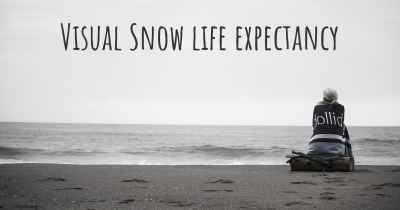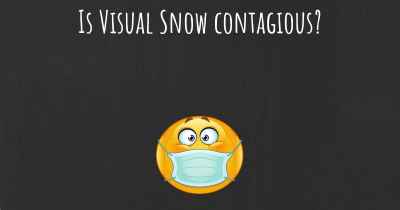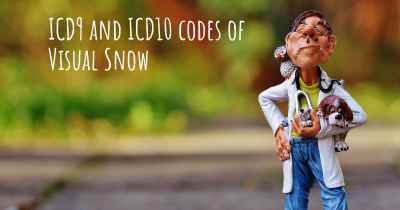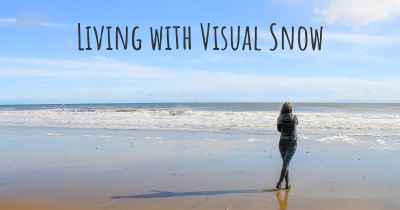How is Visual Snow diagnosed?
See how Visual Snow is diagnosed. Which specialists are essential to meet, what tests are needed and other useful information for the diagnosis of Visual Snow
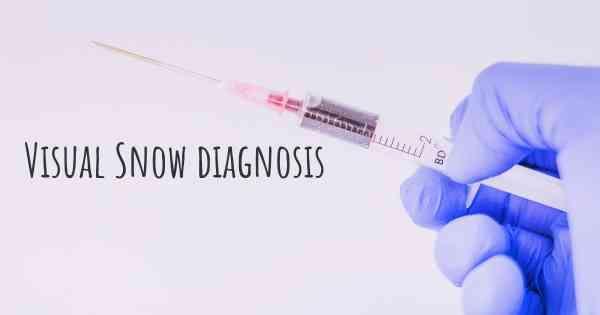
How is Visual Snow diagnosed?
Visual Snow is a rare condition characterized by the presence of persistent visual disturbances, such as seeing static or flickering lights in the visual field. Diagnosing Visual Snow can be challenging as there is no specific test or imaging technique available to confirm its presence. Instead, healthcare professionals rely on a combination of patient history, clinical examination, and exclusion of other potential causes to make a diagnosis.
Patient History: The first step in diagnosing Visual Snow is obtaining a detailed patient history. The healthcare provider will ask the patient about their symptoms, including the duration, frequency, and intensity of visual disturbances. They may also inquire about any associated symptoms, such as headaches, dizziness, or anxiety. It is important for the patient to provide accurate and specific information to help guide the diagnosis.
Clinical Examination: After gathering the patient's history, a comprehensive clinical examination is conducted. This examination typically includes a thorough assessment of the patient's visual acuity, visual field, and eye movements. The healthcare provider will also examine the patient's eyes using specialized instruments, such as an ophthalmoscope, to evaluate the health of the retina, optic nerve, and other structures. Any abnormalities or signs of underlying eye conditions will be noted.
Exclusion of Other Causes: Visual Snow is a diagnosis of exclusion, meaning that other potential causes of the symptoms must be ruled out. The healthcare provider will conduct various tests and investigations to eliminate other conditions that may present with similar visual disturbances. These may include blood tests, neuroimaging (such as MRI or CT scan), and consultation with other specialists, such as neurologists or ophthalmologists.
Diagnostic Criteria: In recent years, researchers have proposed diagnostic criteria to aid in the diagnosis of Visual Snow. These criteria include the presence of persistent visual disturbances for at least three months, the absence of any other ocular or neurological conditions that could explain the symptoms, and the impact of the symptoms on the patient's daily life. However, it is important to note that these criteria are still evolving, and a definitive diagnosis may require further research and consensus.
Collaborative Approach: Due to the complexity of Visual Snow and its potential overlap with other conditions, a collaborative approach involving multiple healthcare professionals may be necessary. This may include ophthalmologists, neurologists, psychiatrists, and other specialists who can contribute their expertise to the diagnostic process.
In conclusion, diagnosing Visual Snow relies on a combination of patient history, clinical examination, exclusion of other potential causes, and collaboration among healthcare professionals. While there is no specific test for Visual Snow, a thorough evaluation and consideration of the patient's symptoms and medical history can help guide the diagnosis.
Posted May 9, 2017 by Emily 1150
Posted May 9, 2017 by Leonardo 2000
Posted Jun 4, 2017 by Jayden 1410
Posted Oct 2, 2017 by Rrakusin 2000
Posted Jan 12, 2018 by Max 3550
Posted Mar 13, 2018 by samanthapaige 1500
Posted Feb 2, 2019 by Dangalangus 820
Posted May 28, 2019 by Labnjab 2500
Posted Sep 3, 2019 by Yasmine Elsen 2500
Posted Sep 4, 2019 by Denali 2550
Posted Mar 2, 2020 by Karmalita 1400
Eye exams do not show VS as it is a neurological condition.
Posted Sep 14, 2021 by Kay 2670
Posted Mar 14, 2022 by Khaled 3630
To make this diagnosis, your healthcare provider will:
Take a health history
Complete a physical examination
Refer you for an eye exam
Conduct a neurological exam
Before diagnosing visual snow syndrome, other medical conditions need to be ruled out. The diagnosis will be made if you have seen "snow" or "static" consistently for longer than three months and have two or more of the following symptoms:10
Sensitivity to light
Impaired night vision
Seeing something when it is no longer there
Other visual changes, such as seeing floating objects
A History of Misdiagnosis
In the past, people with visual snow syndrome were often misdiagnosed. Common misdiagnoses included:
Migraine
Psychogenic disorder, which means the symptoms have a psychological root
Post-hallucinogenic drug use flashback
Most people with visual snow syndrome, however, have no history of drug abuse. Their symptoms also don't get better with standard migraine treatment.
Today, healthcare providers know more about visual snow syndrome and are better at spotting it. If you think you have the condition but were diagnosed with something else, consider getting a second opinion.
There's still much to know about visual snow syndrome. For this reason, a diagnosis may be elusive at first. Your healthcare team may include a neurologist, an ophthalmologist, and a psychologist.
I would suggest seeking out a clinician who has experience of dealing with Visual Snow patients. Many can be found via the internet and you can usually find someone within reasonable travelling distance to your location. If this is not possible then a video or telephone appointment may be offered.
Posted Dec 3, 2022 by Stuart3758 900
